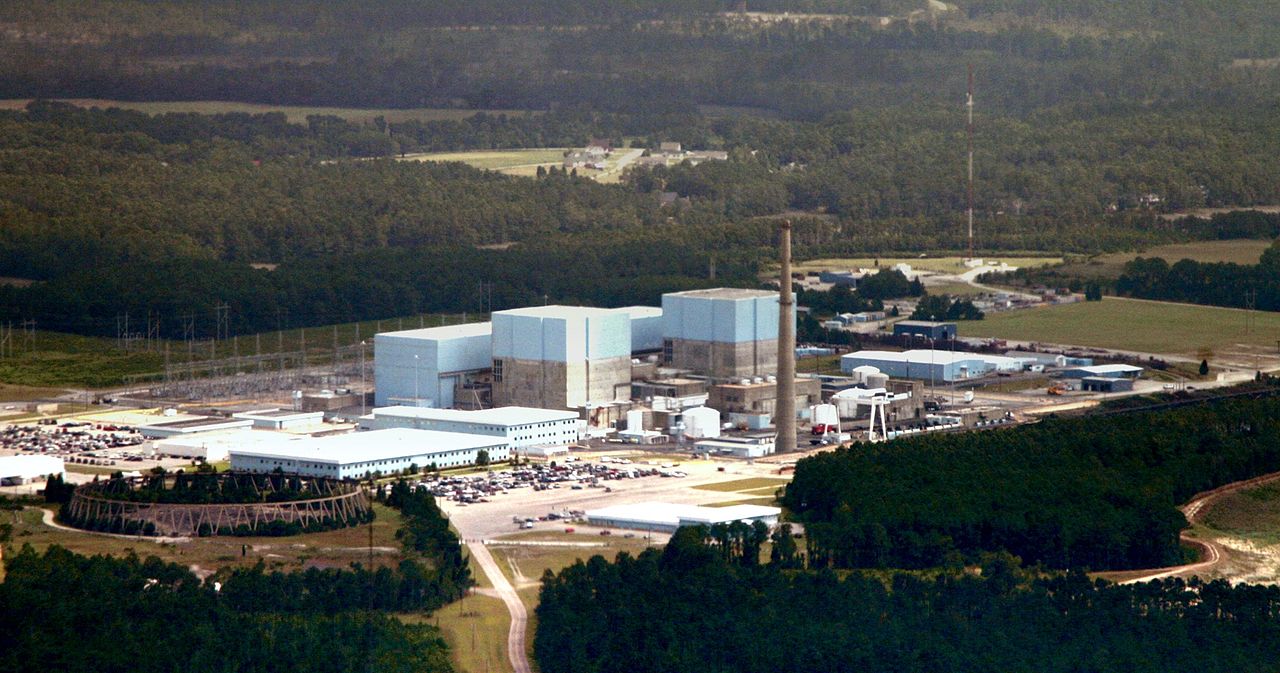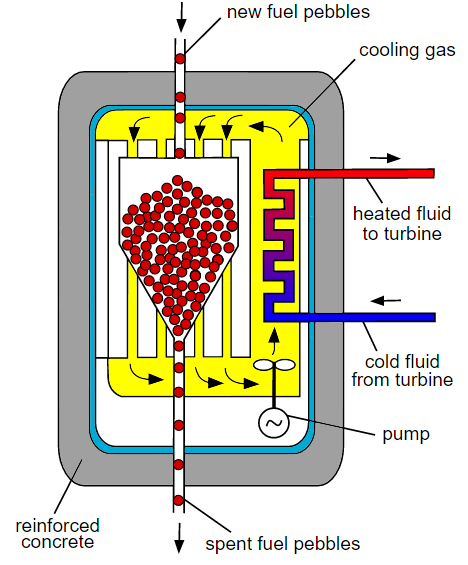The Fukushima nuclear disaster which saw three reactors melt down was caused by a tidal wave that flooded the power plant and the emergency cooling generators. The wave was caused by an undersea earthquake. TEPCO, the owner of the Fukushima plant, knew that their plant might not be able to withstand a major tidal wave but did nothing about it before disaster struck.
Part of the problem at Fukushima was the design of the GE Mark II nuclear reactors there and the buildings that contained them. It turns out that there are twenty commercial power reactors in the U.S. that are based on the Mark II design.
Hurricane Florence is headed for the North Carolina coast and will arrive tomorrow. It will have winds of up to one hundred and thirty miles per hour and up to forty inches of rain in some areas. The storm track now looks like Florence will swerve into South Carolina and Georgia after it makes landfall. Up to six nuclear power plants in North Carolina are may hit by the storm. Following the Fukushima nuclear disaster, all U.S. nuclear power plants were upgraded to better withstand storms and flooding.
The Nuclear Regulatory Commission is sending additional inspectors to check nuclear power plants in the path of the storm in North Carolina and South Carolina. They intend to provide around the clock support to the staffs at the nuclear power plants.
Duke Energy owns and operates the Brunswick Nuclear Generating Station in Brunswick County, North Carolina. It is located near the town of Southport which is on the Atlantic Ocean about thirty miles south of Wilmington. Following the Fukushima nuclear disaster, a thorough safety inspection discovered that there were many possible areas where there could be leakage and water penetration of the plant that need to be repaired. There were missing seals, missing or corroded bolts, broken links of pressure plates, corrosion, open terminal boxes, gaps in weather stripping on doors and inadequate repairs of previous leakage.
The Brunswick power plant is twenty feet above sea level and can withstand a storm surge of about twenty-two feet. The plant’s emergency generators would be safe from such a surge. The plant is four miles from the ocean and Duke says that they can handle a Category 5 hurricane. Florence is expected to make landfall as a Category 4 storm with winds of about one hundred and thirty miles per hour. The power plant structures that house the reactors should be able to hold up against winds of that speed. However, an on-site inspector with the NRC said that flooding is a greater threat to the site with Florence predicted to drop up to 20 inches of rain in the area of the plant and generate a fifteen-foot storm surge.
The current track predicted for Florence is aimed straight at the Brunswick plant. Let us hope that the repairs and preparations will protect the plant and other nuclear plants in South Carolina. Nuclear plants have weathered other severe storms on the East Coast with minor damage and no major nuclear releases.
Blog
-

Nuclear Reactors 612 – Brunswick Nuclear Generating Station In North Carolina Is In The Path Of Hurricane Florence
-

Geiger Readings for Sep 12, 2018
Ambient office = 63 nanosieverts per hour
Ambient outside = 111 nanosieverts per hour
Soil exposed to rain water = 115 nanosieverts per hour
Plum from Central Market = 108 nanosieverts per hour
Tap water = 73 nanosieverts per hour
Filter water = 79 nanosieverts per hour
-

Nuclear Reactors 611 – Experts Warn Of Dangers Of High Temperature Gas Cooled Pebble Bed Reactor
Pebble-bed reactors utilize “pebbles” made of uranium covered with a layer of ceramic and graphite for fuel. The Chinese are preparing to go operational with one of the high temperature gas cooled pebble-bed reactors (HTGR) they call HTR-PM. While the Chinese claim that such reactors are very safe, experts in the U.S. and Germany associated with MIT warn that there are still possibilities for serious accidents. Their report was published in the journal Joule.
Rainer Moormann, one of the authors of the MIT report, said, “There is no reason for any kind of panic, but nuclear technology has risk in any case. A realistic understanding of those risks is essential, especially for operators, and so we urge caution and a spirit of scientific inquiry in the operation of HTR-PM.”
HTGRs can generate electricity more efficiently than older conventional reactors. They also do not have some of the safety problems of conventional commercial reactors. The graphite and ceramic covered pebbles of uranium fuel can withstand the high temperatures and passive cooling systems in the cores of the HTGRs which prevents the meltdowns that are possible in conventional commercial reactors.
Some boosters of pebble-bed reactors claim that they are so safe and self-regulating that operators could just turn them on and walk away. As a result of this claim, the HTR-PM has been constructed without the safeguards that conventional commercial reactors incorporate. The HTR-PM does not have a high-pressure, leak-tight containment structure to trap escaping radioactive materials in case of an accidental leak of the core. It also does not have a backup active cooling system.
Moormann said, “No reactor is immune to accidents. The absence of core meltdown accidents does not mean that a dangerous event is not possible.” The report goes on to point out that with any new technology there is always a danger of user error. Experimental HTGRs have formed localized hot spots in the core and generated unexpectedly high levels of radioactive dust. The pebble-bed design also produces more nuclear waste than conventional commercial reactors which is an important consideration.
Moormann also said, “HTGR designs with what’s known as a prismatic core seem to be less problematic than the pebble-bed one, so development work should concentrate on that.”
The MIT report suggests several steps that can be taken as a precaution in the construction and operation of HTGR. There should be detailed continuous monitoring. Containment and cooling systems should be installed. There should be an extended startup phase during which the reactor can be monitored as it reaches operation temperatures. More and better storage options for the nuclear waste produced by the HTGR should be developed.
Moormann said, “There was already some controversy about pebble-bed HTGRs, but my impression was that many problems of them were not sufficiently published and thus not known to some of my colleagues. I hope that the pros and cons will be broadly discussed.” -

Geiger Readings for Sep 11, 2018
Ambient office = 123 nanosieverts per hour
Ambient outside = 115 nanosieverts per hour
Soil exposed to rain water = 115 nanosieverts per hour
White potato from Central Market = 74 nanosieverts per hour
Tap water = 97 nanosieverts per hour
Filter water = 79 nanosieverts per hour
-

Nuclear Reactors 610 – Belgium Is Building A New Research Reactor
Belgium’s Council of Ministers has just approved six hundred and forty-six million dollars to construct the Myrrha accelerator-driven research reactor at the Belgian Nuclear Research Center’s (SCK-CEN) site in Mol. This funding will cover the period from 2019-2038. The funds will be used for construction of the first important part of Myrrha which is referred to as the Minerva installation. The funds will also be used for the research and development to support the Minerva installation and operating costs for Minerva following the completion of construction in 2026.
The Belgian government also approved the establishment of an international non-profit-making body known as AISBL/IVZW Myrrha. The body has a special legal status that is adopted by big projects that are financed by multiple foreign states. A spokesman for SCK-CEN said, “This decision will strengthen promotion and reception of foreign partners which are interested in the Myrrha project and its applications.”
Myrrha or the Multipurpose Hybrid Research Reactor for High-tech Applications will be a sub-critical assembly. Accelerated protons will trigger the release of neutrons in a low-enriched uranium core. This will result in brief periods of criticality in the core. The fifty-seven-megawatt thermal accelerator-driven system will deliver a six hundred million electron volt beam to a liquid lead-bismuth spallation target. This target is coupled to a subcritical fast reactor cooled with liquid lead-bismuth.
Myrrha is replacing the aging Belgium BR2 research reactor. It will be used for a variety of research functions such as demonstrating the practicality of the idea of transmuting the radionuclides with long half-lives in nuclear waste. Other research areas include nuclear physics, atomic physics, fundamental nuclear interactions, solid-state physics and nuclear medicine. It will also be used to produce radioisotopes for medical diagnostics and treatment.
The Director General of SCK-CEN said, “Thanks to its unique and innovative nature, the research infrastructure will attract researchers from all over the world to Belgium and will train a new generation of experts to provide technological solutions to these major challenges.”
The project is part of the European Strategy Forum on Research Infrastructures. It is also one of three new research reactors that are an important part of the European Research Area of Experimental Reactors. The other two new research reactors are the Jules Horowitz reactor at Cadarache in France and the Palla reactor at Petten in the Netherlands.
The construction of Myrrha was approved by the Belgian government in 2010. Belgium has committed to suppling forty percent of the one thousand one hundred and ten dollars projected cost for the whole project. Other participants will include the European Union and the European Investment Bank. A total of seventy percent of the cost will come from members of the European Union.
The director of the Myrrha program said, “Thanks to our government’s support, Myrrha has made great progress. I would like to thank everyone who assisted in obtaining this decision and who supported this project from the very beginning, in Belgium and abroad. The political, industrial and local authorities’ support also contributed to this success and will remain crucial to complete the project.” -
Geiger Readings for Sep 10, 2018
Ambient office = 85 nanosieverts per hour
Ambient outside = 87 nanosieverts per hour
Soil exposed to rain water = 78 nanosieverts per hour
White mushroom from Central Market = 116 nanosieverts per hour
Tap water = 77 nanosieverts per hour
Filter water = 73 nanosieverts per hour
